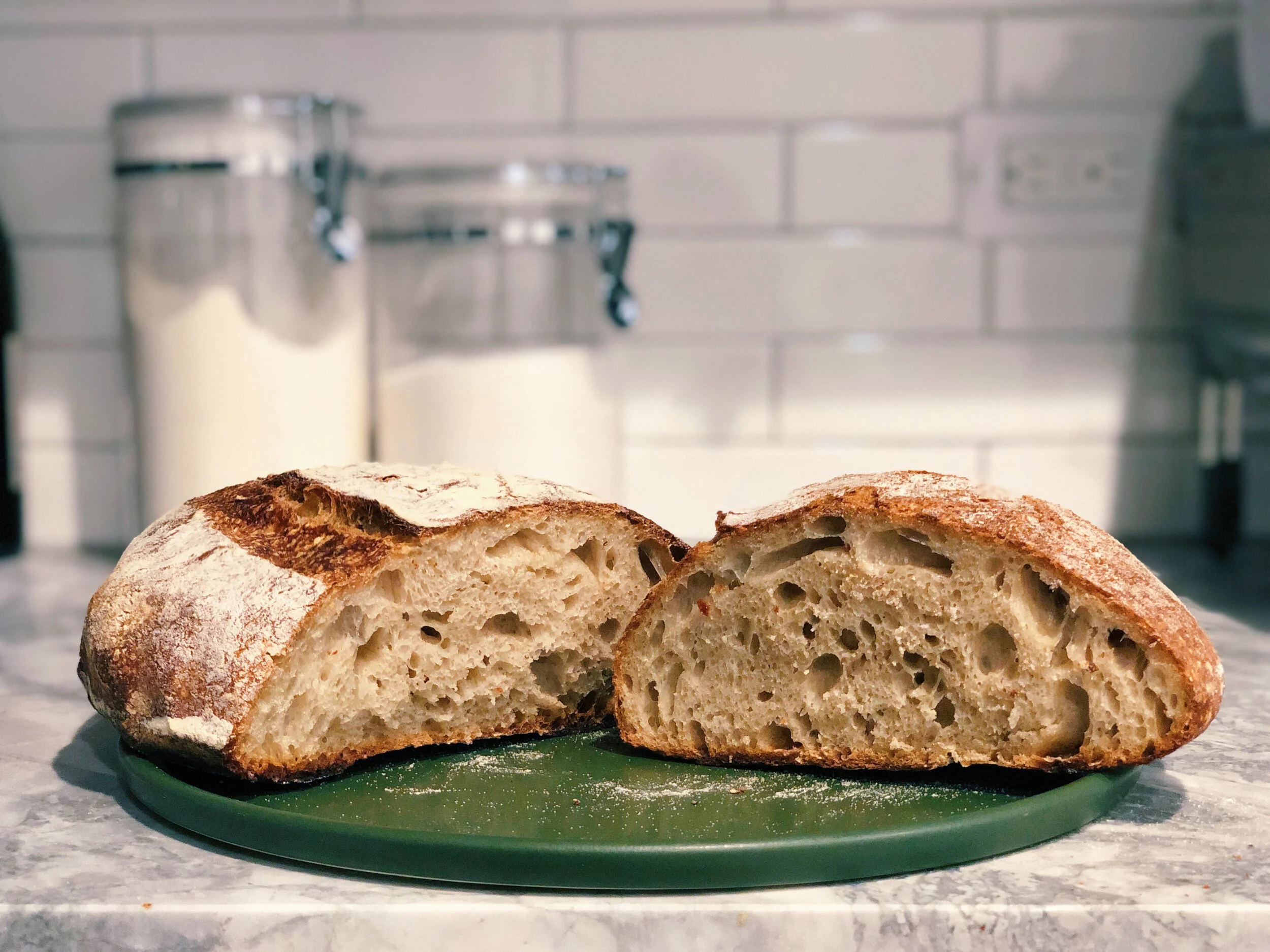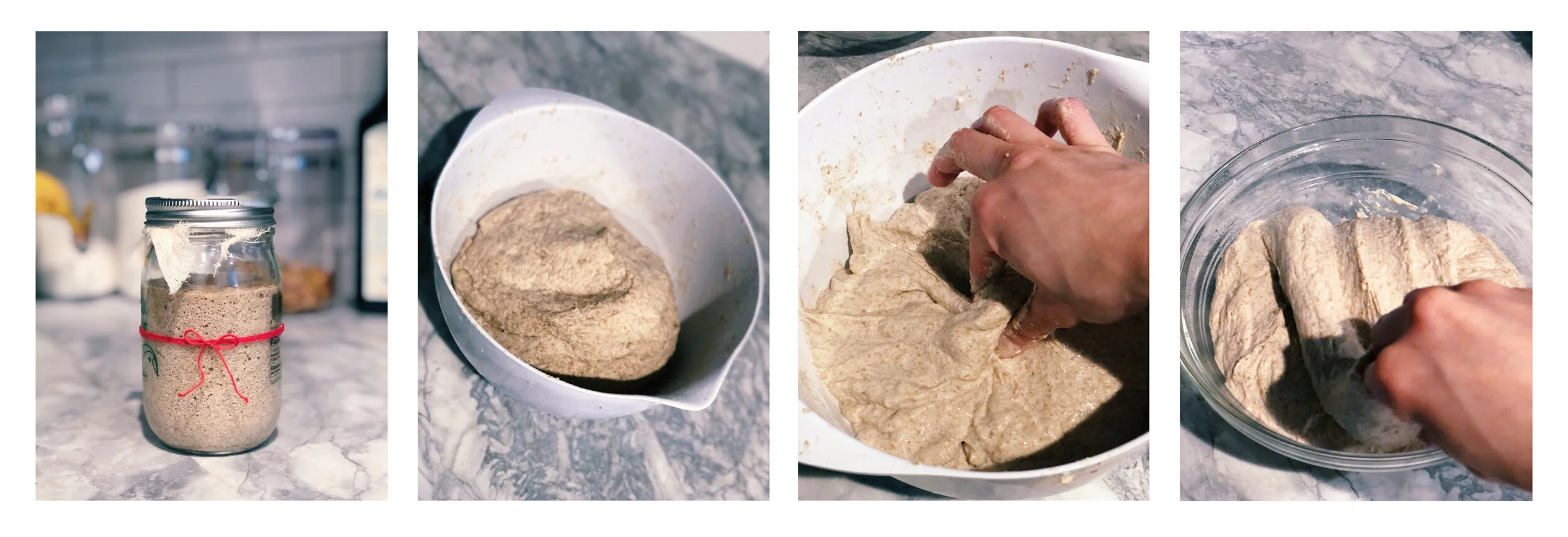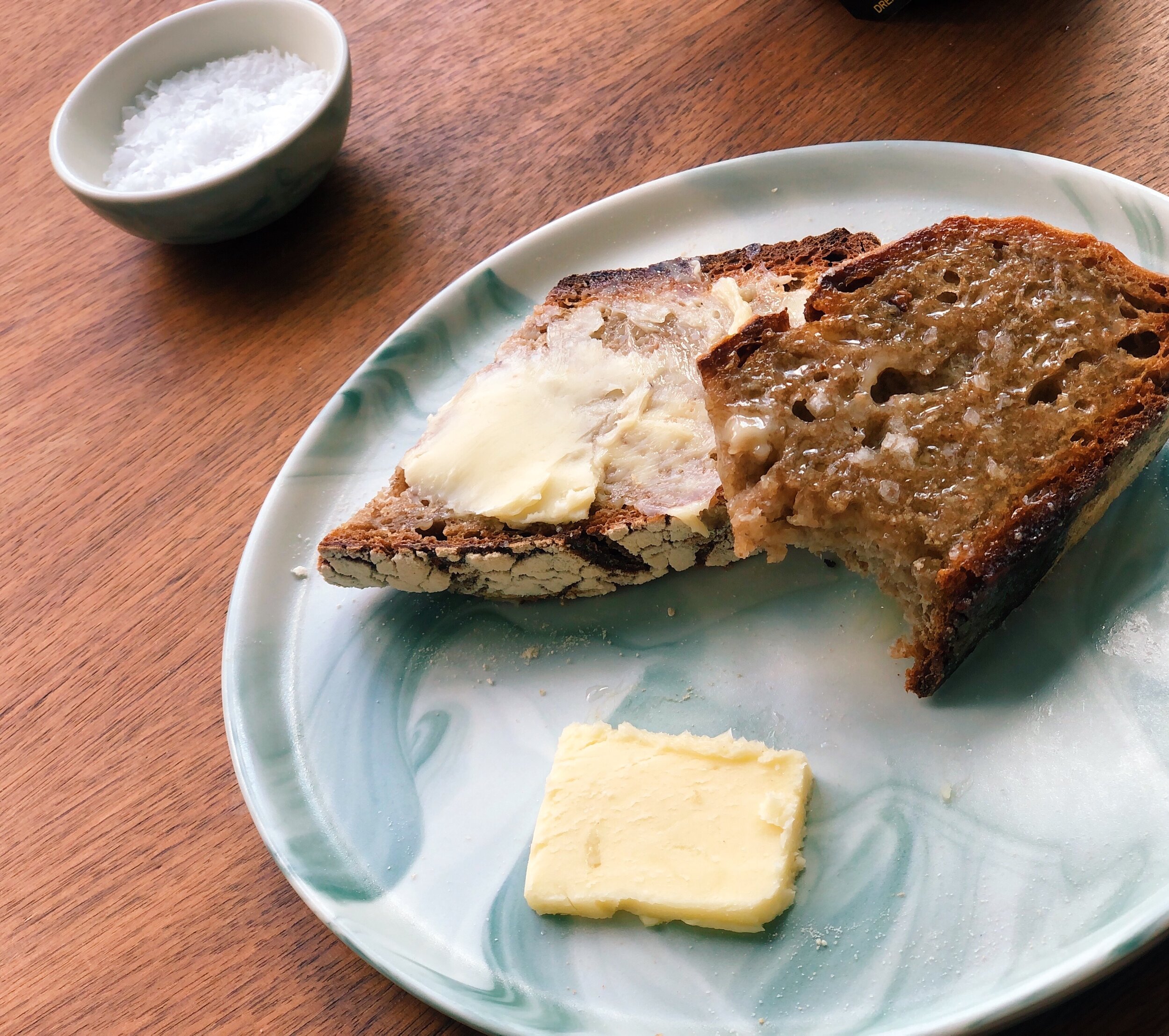Sourdon't.
We all saw this coming. It was as inevitable as a Cuomo dad joke: I’m a millennial in quarantine—of course I made sourdough. And it almost broke me.
Sourdough baking is not only physically and mentally grueling, it’s an emotional gauntlet. People who describe the process as “relaxing” or “immensely rewarding” must be wired like Stepford wives. I’m here to tell you, don’t do it. Do anything else. Crochet. Journal. Talk to your plants. Anything but this. Unless, of course, you’re a type-A masochist with a lot of time on your hands…
When I was growing up in the ‘90s, the sourdough I knew was a different species of bread entirely. Back then, the typical boule was the color of cornflakes, its innards tangy and dense, a far cry from the black-crusted, airy, artisanal beauties of today—and yet, I loved it. I ate it by the fistful. In the years since, I’ve dabbled with bread baking and once took a fermentation class with the wonderful Sarah Owens (author of the James Beard award-winning book Sourdough). She gifted each of us some of her starter, which I fed religiously for a few months and then murdered while I was moving apartments.
When COVID-19 saw us cloistered at home, stress-baking our way through the country’s supply of flour, many anxious minds turned to sourdough. It makes sense. Unlike breads that use commercial yeast, sourdough is leavened with wild yeast, which exists everywhere (and sounds…sexier? That could be the quarantine talking). The perfect simplicity of the ingredients—flour, water, salt—makes it seem accessible, egalitarian. On top of this, sourdough is great for digestion. The lactobacilli in starter neutralize the phytic acid that normally inhibits the breakdown of starches and proteins; this also makes it possible for the body to absorb important micronutrients like iron, magnesium, and calcium.
Beyond practical reasons, there’s something uniquely comforting about a loaf of bread pulled steaming from the oven. There’s also something uniquely aspirational about the humans who can accomplish this miracle. I have friends who bake sourdough. They’re a rare species of nymph—the kind of people who can swan barefoot out of a hot kitchen with dinner for eight and perfectly coiffed hair, who are gracious and effortless hosts, who always make sure you have a full glass of Rioja and laugh it off with mystifying good humor when you spill it on their white carpets. There are times when I long to be like them, particularly these days, when I often feel like a frazzled, inelegant knot of nerve-endings.
So on a panicky day in captivity I thought, what better time to try making sourdough? It seems like it would be right up my alley. I love a challenge, I will spend hours making the perfect pie, I will research and rehearse and follow instructions to a T—and improvise if things go awry (dear reader, THEY DO).
Sourdough baking is not for the faint of heart. It requires a serious investment of time. First of all, have you seen a sourdough recipe? The basic one from Chad Robertson’s Tartine is 30 pages long. It introduces you to seductive gallic terms like ‘levain’ and ‘autolyse’, it explains every chemical reaction in exquisite detail, but a beach-read it is not. On top of this, building a young sourdough starter is like caring for a colicky infant: you have to feed it on a strict schedule, watch it like a hawk, and even then it may collapse into a soggy mess for no conceivable reason. We should also collectively acknowledge that baking sourdough is not really an egalitarian pursuit. Beyond the scarcity of flour these days, time is a privilege, and it takes three days to actually make a loaf of this bread. THREE. DAMN. DAYS.
I like to think I’m pretty stout of heart, so I set about building a starter with all-purpose and rye flour (which is chockfull of nutrients and a great way to kick-start a lively fermentation). For about two weeks, I fed that baby like clockwork until it began to double and fall predictably. When I was ready to bake, however, I found myself desperately low on all-purpose flour. Undaunted, I substituted with rye, thinking this would be more flavorful anyway.
Fast-forward through autolyse, realizing I didn’t have enough starter for this recipe, hastily doing some grade-school fractions, almost an hour of slapping and folding, bulk fermentation, proofing, retarding, shaping, and finally, on the third day, baking. At this point, I collapsed onto my bed, shoulder muscles screaming. There was no way this bread would turn out edible, let alone beautiful. As expected, the loaf I pulled from the oven was misshapen and dense as a brick. I felt like seven kinds of failure and wondered, HOW IS THIS A HOBBY?
Noticing my agonized instagram posts, a friend in Zambia (one of the aforementioned nymphs) called me to say it didn’t have to be so bad. She repaired my shattered confidence and sent me her own recipe. I gnawed on the dry husk of my creation (penance, as I saw it) while watching a soothing video of Sarah Owens artfully scoring a perfect loaf. I resolved to try again.
The next attempt was better! It actually resembled food. Does it have the balanced, malty tang of a She Wolf miche? Hell no. It’s still pretty misshapen, but it taught me a critical lesson of sourdough and life—shift your perspective a little, smother it in butter, and even failure can taste like victory.
Sourdough
I am not even going to attempt the hubris of guiding you through sourdough baking, but I will offer a few tips and resources that have helped me!
I’ve tried a few sourdough recipes from the New York Times and some of the top bread-blog results on Google, and for one reason or another these didn’t work well for me. This is probably because of my own ineptitude, but as a beginner the most forgiving recipe I’ve found is this one. Plus, it comes with a super helpful video.
Flour is alive! Mass-produced flour works in a pinch, but if it’s been commercially milled and sitting in storage forever, it simply won’t perform as well. Small-batch, stone-ground flour is rich with nutrients and will make much better sourdough. If you’re having trouble finding flour near you, here is a wonderful list of smaller mills that still have lots of wonderful varieties of flour!
Rye is great for starter-feeding, but can be tricky to work with in the bread itself. Think about the rye bread you’ve tasted. It’s usually pretty dense, because rye contains a type of gluten (made up of gliadin and a protein called glutelin), which is weaker than wheat gluten so it doesn’t produce much airiness.
The float test is a great way to check whether your starter is ready. Drop a bit of starter and cold water; if it floats, you’re good to go!
If you’re like me and hate discarding sourdough starter, there are plenty of things you can do with it! Adding a little inactive starter to most wheat-based recipes (pancakes, pasta, english muffins, BAGELS) will enrich their flavor and make them a little easier on your stomach.
Don’t try to bake sourdough by following an insta-story. Just don’t.



